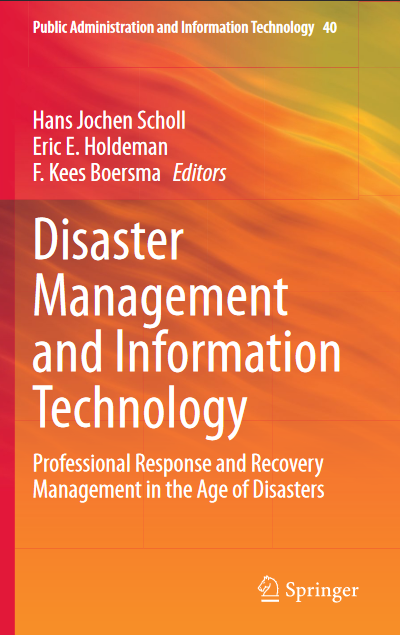

خرید و دانلود نسخه کامل کتاب Disaster Management and Information Technology Professional Response and Recovery Management in the Age of Disasters – Original PDF
64,500 تومان قیمت اصلی 64,500 تومان بود.37,500 تومانقیمت فعلی 37,500 تومان است.
تعداد فروش: 46
Author:
Hans Jochen Scholl • Eric E. Holdeman • F. Kees Boersma
Before going further with a review of technology and how it has been incorporated into the emergency management profession, it must first be explained what the differences are between emergencies, disasters, and catastrophes. Emergencies are the most typical, day-to-day type of events that involve fire and police agencies. These are the daily traffic accidents, house fires, heart attacks, and lost or missing person’s type of low-level events. First responder agencies are sized and equipped to handle these events. Should there be a larger-scale emergency that exceeds the capabilities of a single department, e.g., a mass shooting of five people or a large apartment fire, agencies can call upon other like agencies from neighboring jurisdictions to come and assist them. It is these events that usually do not include the use of emergency management resources. Emergencies are considered routine. Disasters are those types of events that exceed the normal capabilities of first responder agencies and require a more coordinated response to the situation either due to the large scale of a disaster or the number of people or properties that are being impacted. Flooding is the most common disaster. Other natural disasters caused by severe weather include tornadoes, winter storms, and hurricanes. Human- caused events can also tip the scale of an event. These can include terrorism, hazardous material incidents, cybersecurity attacks, and the like. In the above cases, a more coordinated response is needed. Typically, a jurisdiction will activate what is called an emergency operations center (EOC) where representatives from a wide range of agencies and even the private sector can come together physically to coordinate a response to the events impacting the community. Each level of government, from a city to a county, to the state and even the federal government will operate an EOC in a disaster situation. Catastrophes are disasters on a much bigger scale. The impacts to people and property are the same as you see in disasters, only with either a larger footprint or more devastating impact to, for example, a high population density geographic area. A catastrophe will automatically require the injection of federal resources and other states outside of the impacted area due to the overwhelming impact of the disaster. An example for what will be categorized as a catastrophe will be a full-rip Cascadia subduction fault earthquake that impacts the coasts of the states of Washington, Oregon, and parts of Northern California. Local and immediately available regional resources will be overwhelmed. Emergency Management’s Journey with Technology 5 The challenge of technology is that it is likely to be used daily for emergencies and then also be needed for disasters and even catastrophes. The ability of technology to “scale up” is one of the challenges people and agencies must plan for. Additionally, with the larger-scale events, electrical power may not be available, so an overdependence on technology can hinder a community’s response at the worst possible moment. Communities must look at mitigating all the possible impacts that could take their technology “offline” when the solutions provided by the technological system are at their highest need. Another challenge with any technology being used in a larger event is the interoperability of the technology across the first responder and federal assets coming to assist in responding to the disaster. Much money has been invested in communications interoperability, following the events of the terrorist attacks of 9/11, which in itself remains a challenge. As we continue to adopt more sophisticated technological systems, not all of them will be interoperable across the responding agencies that flow into a disaster zone to assist with the response and recovery operations. History of Emergency Management The Civil Defense Era It is important to put the history of emergency management into context. Before there was an emergency management profession, there was civil defense. Civil defense sprung from the beginnings of the Cold War and the threat of nuclear attack by the Soviet Union. Once intercontinental ballistic missiles with nuclear warheads were developed, the need for an organized function of civil defense was promulgated. The primary activities of the civil defense era focused on trying, to the best of the nation’s capability, to have the maximum number of people survive a nuclear attack. The planning function was oriented on two major areas. The first area was identifying publicly available civil defense shelters. These were primarily commercial buildings made out of concrete, steel, and stone. The basements of these buildings were identified as places where people could congregate and achieve some modicum of protection from an initial nuclear blast and the subsequent nuclear fallout that would follow. The second planning function included planning for the evacuation of major population centers that were believed to be targets in a nuclear war. The principal function of the planning was purely evacuating people out of cities with little thought to where they would go or how they would be cared for following the evacuatio



نقد و بررسیها
هنوز بررسیای ثبت نشده است.